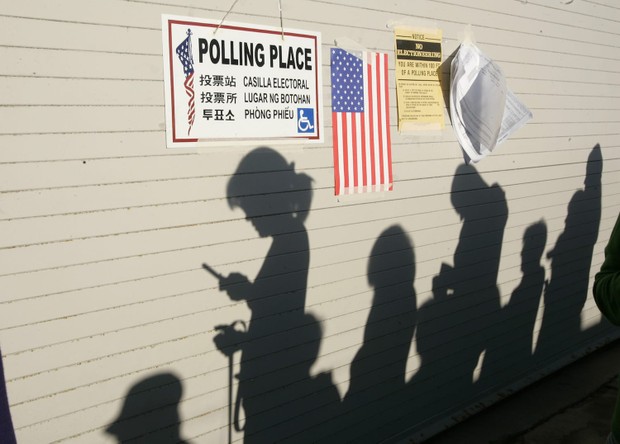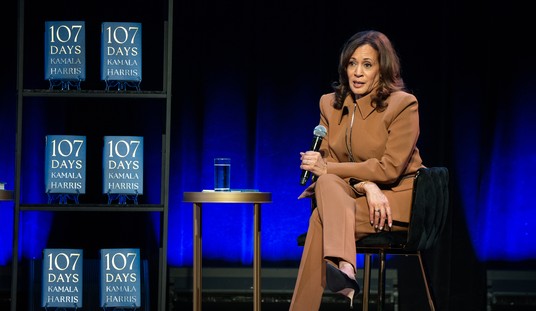=========
=========
Promoted from the diaries by streiff. Promotion does not imply endorsement.
=========
=========

Reposted from Real Clear Politics Feb. 22, 2019
According to today’s RealClearPolitics polling average, President Trump’s job approval is 44.1 percent with 52.6 percent of voters disapproving of his performance.
Now contrast his job approval with that of the last two presidents at this same point in their first term, both of whom were re-elected. On Feb. 22, 2011, the RCP job approval average for Barack Obama was 48.5 percent with 45.7 percent disapproving. On this same day in 2003, George W. Bush’s average was 57 percent with 37 percent disapproving.
Meanwhile, those dismal numbers are only one gigantic pothole on his bumpy road to re-election. What I consider Trump’s greatest foe is voter demography as outlined in the recent Pew Research Center study, “An Early Look at the 2020 Electorate.” That study projects the percentage of eligible voters from each of the nation’s four largest racial and ethnic groups. Unfortunately for Trump, the results do not bode well based on how these same groups voted in 2016.
It’s the math, stupid! Specifically, how demographic math impacts Trump’s ability to win the required 270 Electoral College votes and thus, a second term.
Let’s take a closer look, but first a caveat: Pew’s projected percentage of eligible 2020 voters by racial and ethnic group will likely differ from the percentage who actually cast a ballot.
The study projects that whites will comprise 66.7 percent of eligible voters; Hispanics, 13.3 percent; blacks, 12.5 percent; and Asians, 4.7 percent. The fact that non-whites will comprise roughly one-third of eligible voters would not be a problem for Trump and the Republican Party if they did not overwhelming and consistently vote Democratic. But the ever-increasing Hispanic vote is the GOP’s greatest cause of present and future consternation.
For example, due to Hispanic growth, traditional “ruby red” Arizona, with 10 electoral votes, will be among the most contentious 2020 battleground states. And, though Republicans fondly remember when New Mexico last went “red”– in 2004, helping re-elect President George W. Bush – it is now solidly blue.
Republican strategists also fear how the traditionally wide gap between the number of eligible and actual Hispanic voters is dramatically shrinking. It’s no surprise that as the Hispanic population grows, as with any rising ethnic group it becomes increasingly empowered, engaged, and mobilized to vote.
In fact, the 2018 midterm elections could be considered a historic turning point because Hispanics made up 11 percent of voters — a record level of participation. (The number was only 7.3 percent in the previous midterms.) Most important, that 11 percent of the 2018 electorate mirrors the 2016 presidential election turnout when Hispanics also composed 11 percent of the electorate while supporting Democrat Hillary Clinton by 66 percent to 28 percent for Donald Trump.
In past presidential elections, turnout trends for Hispanics showed both consistent growth and solid support for the Democratic candidate. In 2012, Hispanics constituted 10 percent of the voting electorate when 71 percent supported Barack Obama to just 27 percent for Mitt Romney. In 2008, Hispanics were 9 percent of the voting electorate, and 67 percent supported Obama compared to 31 percent for John McCain.
One could even go back to the 1984 Republican landslide when Hispanics made up only 3 percent of the electorate. Still, 66 percent supported the Democratic candidate, former Vice President Walter Mondale, compared to 34 percent who voted for Ronald Reagan.
The takeaway is that the Democrat presidential nominee in 2020 can count on support from at least two-thirds of Hispanic voters, who will likely constitute at least 12 percent of the electorate.
As previously seen, Pew’s study projects that in 2020 the percentage of eligible Hispanic voters is poised to overtake the percentage of eligible African-American voters, who in 2016 was 12 percent of the electorate, with 89 percent supporting Clinton. A great unspoken fear among Republican leaders is that the Hispanic vote has grown to be as solid a Democrat bloc as that of African-Americans.
Asians too are growing into another Democrat voting bloc. In 2016 they were 4 percent of voters and, similar to Hispanics, 65 percent voted for Clinton and only 27 percent for Trump.
Finally, there is the majority white vote that the Pew study projects will form 66.5 percent of eligible voters in 2020. Shown below is how whites’ percentage of the total voting electorate has consistently decreased since 2004 – the last time a Republican president won re-election.
2004: 77 percent
2008: 74 percent
2012: 72 percent
2016: 70 percent
2020: 68 percent?? (My projection based on trends.)
In 2016, Trump won 57 percent of the white vote compared to Clinton’s 37 percent. In 2020, it is anyone’s guess how much Trump will need to increase that 57 percent in order to win re-election because, pre-election, non-white vs. white voter turnout are variables that can only be estimated and modeled.
But, common sense dictates that the shrinking white vote could negatively impact Trump’s chances of again winning the three traditionally Democrat-leaning battleground states of Pennsylvania, Michigan, and Wisconsin with their predominately white populations and combined total of 46 electoral votes. These three states boosted Trump’s total to 304, well over the 270 needed for victory — despite him losing the popular vote to Clinton by 2.9 million votes — 2.1 percent of the total cast.
It is also instructive to remember just how Trump won:
-Pennsylvania by 44,292 votes, a 0.7 percent margin of victory.
-Wisconsin by 22,748 votes, a 0.7 percent margin.
-Michigan by 10,704 votes, a 0.3 percent margin.
And already there is trouble brewing for him in Michigan. A recent hypothetical general election matchup poll had all four of the leading Democratic presidential candidates denying him a second term.
But, as my Republican friends are fond of saying, “We don’t believe polls” and “Pollsters always miss hidden Trump support.”
I don’t necessarily believe my friends, but this I know, the American electorate is not minting enough new white voters to achieve Trump’s re-election unless he increases his percentage of white voters by a yet unknown number of percentage points in exactly the right combination of states where electoral votes add up to 270.
In the meantime, the president can’t change demographics, but he can and must increase his job approval numbers. As a guide, and again I state for emphasis, the last re-elected Republican president, and the last Republican to win the popular vote, won a close re-election race against John Kerry in 2004 with a 48 percent job approval and a 47 percent disapproval rating the last week before the election.
Today Trump’s approval is four points below, and his disapproval is five points above, George W. Bush’s.
Based on all you have read, draw your own 2020 conclusions.













Join the conversation as a VIP Member